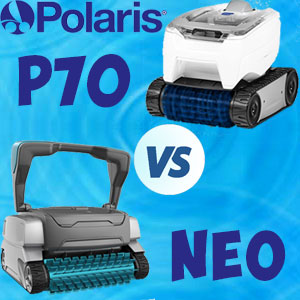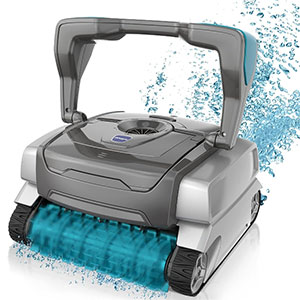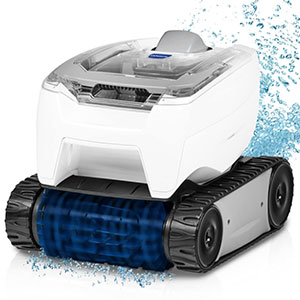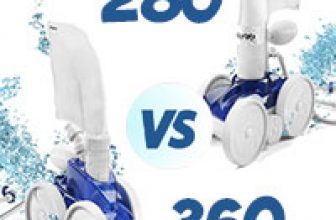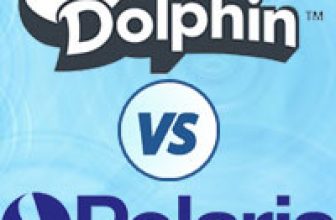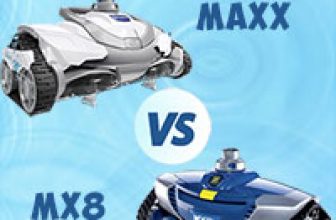Comparison table
2. Main differences between models
Polaris Neo and P70 are both budget robotic corded cleaners. Even though they have similar truck wheels and filter-canister functionality, they have many other differences:
- Polaris Neo can clean the floor, walls, and waterline, and P70 can handle only the floor and cove.
- The default cleaning cycle of Polaris Neo is 1.5 hours, and you can choose the mode (floor only, or floor/walls/waterline), while the P70 has one cleaning cycle 2 hours long.
- The Polaris Neo is equipped with 2 rubber brushes, while the P70 has only one front brush.
- Polaris Neo is designed for small and medium pools, as it has a 50 ft. cord, while Polaris P70 has a smaller 40 ft. cable and is limited only to small pools.
- The filter canister corresponding to the Neo model is larger (4L) compared to the P70 canister (3L).
These are the main differences between the two models; for more details of the robot’s operation and their differences, please check the following parts of this article.
3. Detailed product review
- Cleans walls, floor, and steps
- Easy and quick filter canister extract
- Fine filter basket
- Simple control functions
- Two large PVC brushes
- Lightweight
- SGC (surface control system)
- Track wheels
- Compact and lightweight model
- Transparent filter lid
- Cyclonic vacuum technology
- One pleated brush in front
- Easily removable filter
- Truck wheels
- Powerful suction
- Easy maintenance
- Control only with one button

Hi! I’m Markus Robertson, and water is my passion.
Five years ago, I graduated from the University of California-Los Angeles and was going to become a professional marine biologist. However, my fate had other plans for me, and due to family problems, I had to find a more stable and well-paid job. I had only one wish for my job to be connected with water.
During this period of my life, I worked as a sales manager at Olympic Pool & Spa Supplies. The job helped me learn everything about swimming pools and related pool equipment, as well as how to choose the best option and what to pay attention to.



